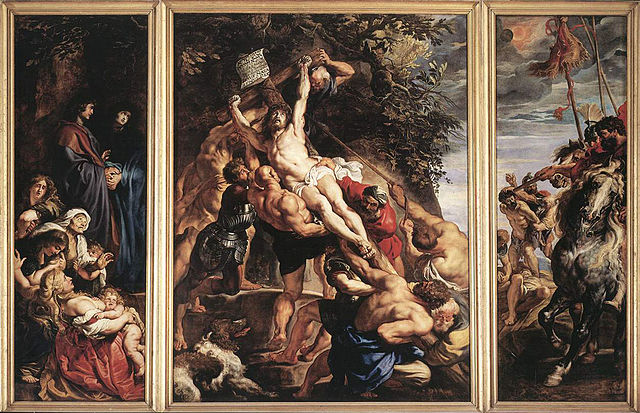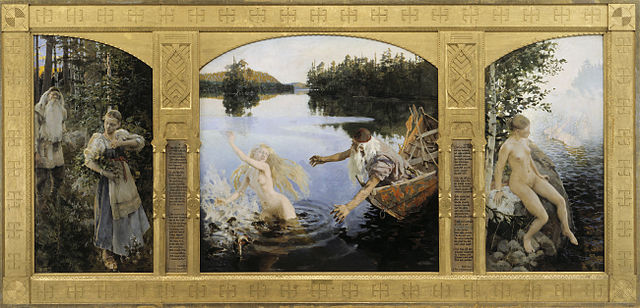The Elevation of the Cross (Rubens)
The Elevation of the Cross is the name of two paintings, a very large triptych in oil on panel and a much smaller oil on paper painting. Both pieces were painted by the Flemish artist Peter Paul Rubens in Antwerp, Belgium, the original in 1610 and the latter in 1638. The original is a winged altarpiece, with the outside of the hinged wings also painted. These can be folded over the central panel, giving an 'open view' and a 'closed view'.
The Elevation of the Cross (Rubens)
Anton Gunther Gheringh - Interior of the former Saint Walpurga church of Antwerp
Composite image
Outside of left wing: Saint Amand with St. Walburga
A triptych is a work of art that is divided into three sections, or three carved panels that are hinged together and can be folded shut or displayed open. It is therefore a type of polyptych, the term for all multi-panel works. The middle panel is typically the largest and it is flanked by two smaller related works, although there are triptychs of equal-sized panels. The form can also be used for pendant jewelry.
The Merode Altarpiece, attributed to the workshop of Robert Campin, c. 1427–32
Dreikönigsaltar by Hans Pleydenwurff.1460-1465
Hieronymus Bosch, The Garden of Earthly Delights, 1490–1510. Museo del Prado, Madrid
The Aino Myth, the Kalevala based triptych painted by Akseli Gallen-Kallela in 1891. Ateneum, Helsinki








